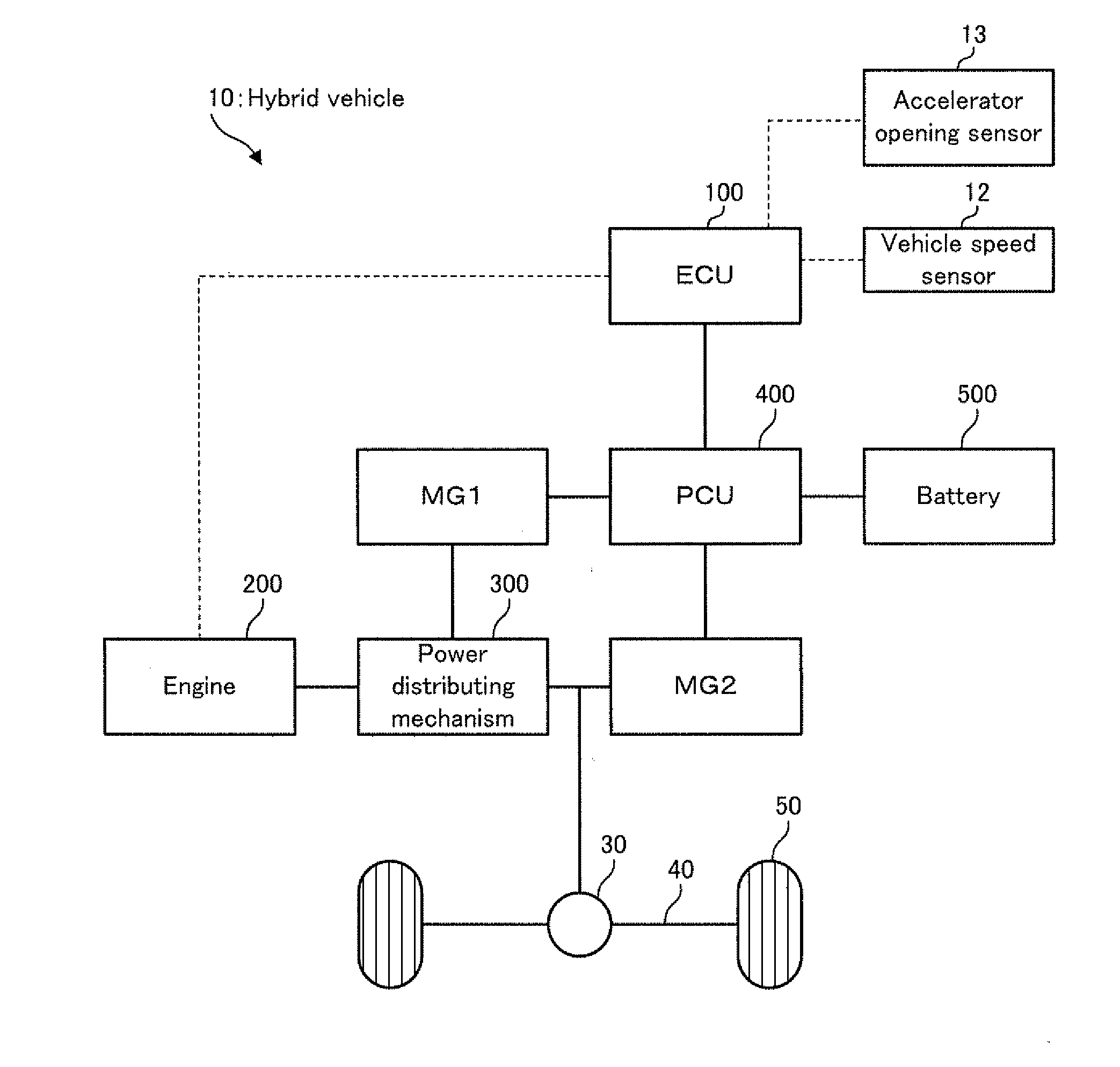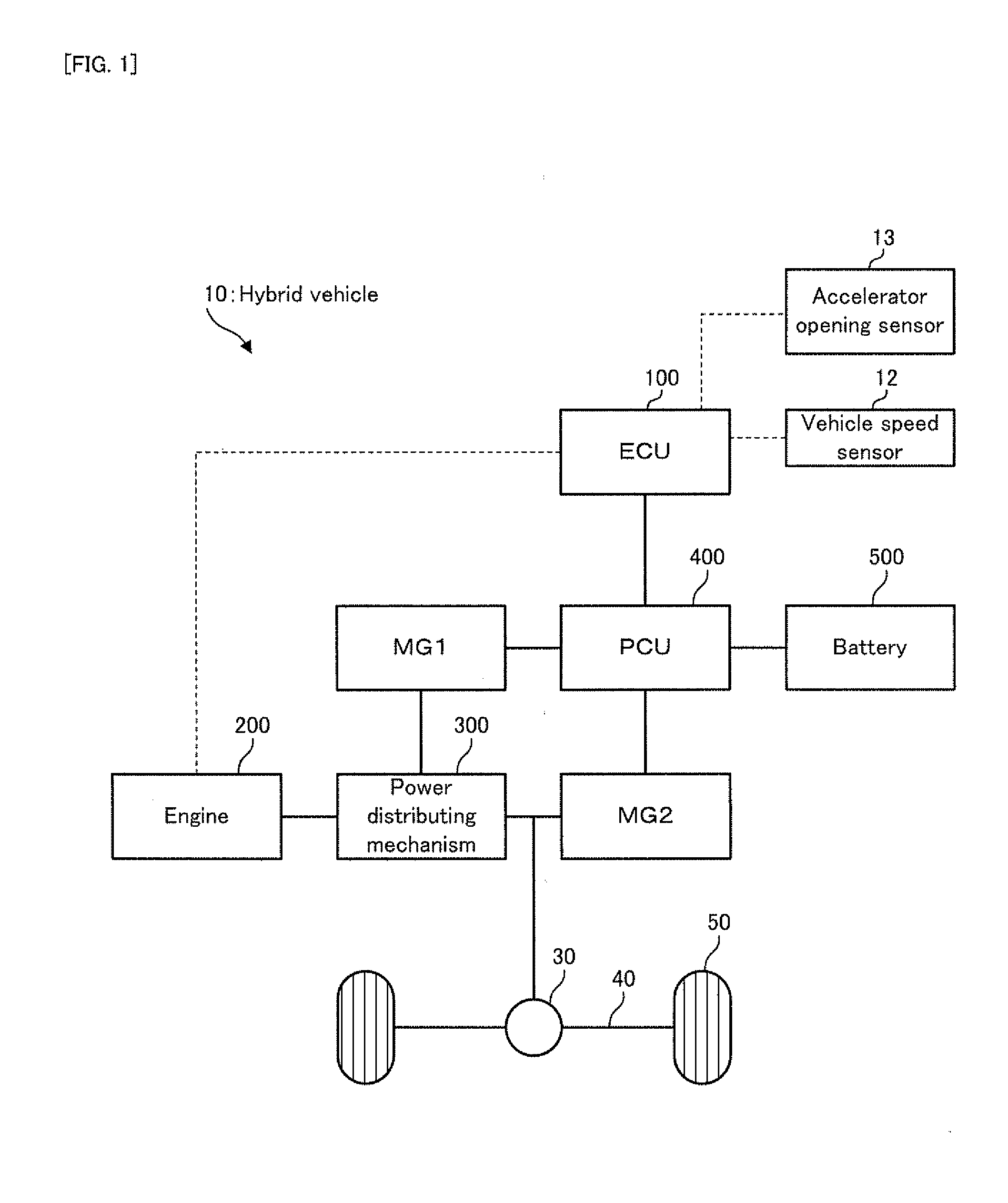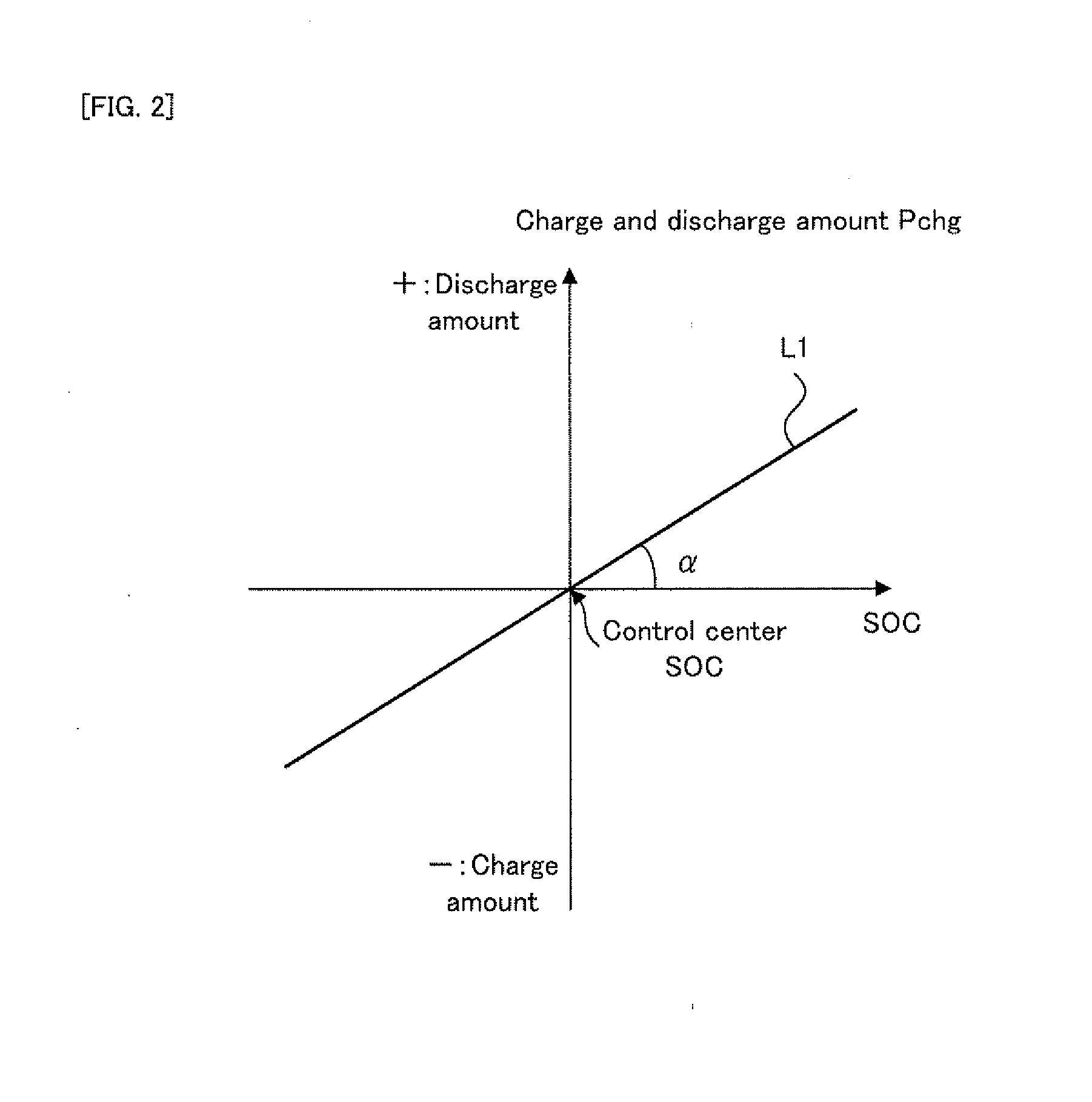Charge and discharge control apparatus and method
a control apparatus and discharge control technology, applied in the direction of vehicle position/course/altitude control, process and machine control, instruments, etc., can solve the problems of difficult to improve the convergence properties, driver or passenger of the vehicle likely to feel uncomfortable, etc., to achieve the effect of quick convergence of the soc of the battery and increase the convergence properties
- Summary
- Abstract
- Description
- Claims
- Application Information
AI Technical Summary
Benefits of technology
Problems solved by technology
Method used
Image
Examples
first embodiment
[0034]A charge and discharge control apparatus in a first embodiment will be explained with reference to FIG. 1 to FIG. 3.
[0035]Firstly, with reference to FIG. 1, an explanation will be given to an entire configuration of a hybrid vehicle to which the charge and discharge control apparatus in the first embodiment is applied.
[0036]FIG. 1 is a schematic block diagram illustrating the configuration of the hybrid vehicle in the first embodiment.
[0037]In FIG. 1, a hybrid vehicle 10 in the first embodiment, which is one example of the “vehicle” of the present invention, is provided with an electronic control unit (ECU) 100, an engine 200, a motor generator MG1, a motor generator MG2, a power distributing mechanism 300, a power control unit (PCU) 400, a battery 500, a vehicle speed sensor 12, an accelerator opening sensor 13, a reduction gear mechanism (or speed reduction mechanism) 30, an axle 40, and wheels 50.
[0038]The ECU 100 is provided with a central processing unit (CPU), a read onl...
second embodiment
[0064]A charge and discharge control apparatus in a second embodiment will be explained with reference to FIG. 4 to FIG. 7.
[0065]FIG. 4 is a flowchart illustrating a flow of the charge and discharge control of the battery in the second embodiment. Incidentally, in FIG. 4, the same steps as those of the charge and discharge control of the battery in the first embodiment illustrated in FIG. 3 will carry the same step numbers, and the explanation thereof will be omitted as occasion demands.
[0066]In FIG. 4, the charge and discharge control of the battery in the second embodiment is different from the charge and discharge control in the first embodiment described above in that the hunting allowable period T is set on the basis of the driving state of the hybrid vehicle 10 (refer to steps S11 and S12), and is substantially the same as the charge and discharge control in the first embodiment described above in other points.
[0067]In FIG. 4, in the charge and discharge control of the battery...
PUM
 Login to View More
Login to View More Abstract
Description
Claims
Application Information
 Login to View More
Login to View More - R&D
- Intellectual Property
- Life Sciences
- Materials
- Tech Scout
- Unparalleled Data Quality
- Higher Quality Content
- 60% Fewer Hallucinations
Browse by: Latest US Patents, China's latest patents, Technical Efficacy Thesaurus, Application Domain, Technology Topic, Popular Technical Reports.
© 2025 PatSnap. All rights reserved.Legal|Privacy policy|Modern Slavery Act Transparency Statement|Sitemap|About US| Contact US: help@patsnap.com



